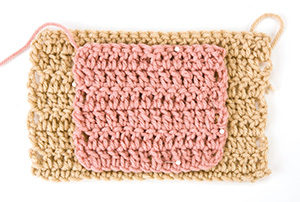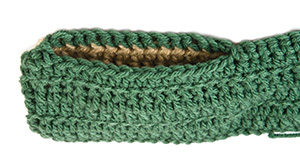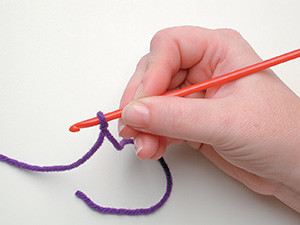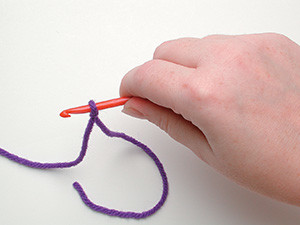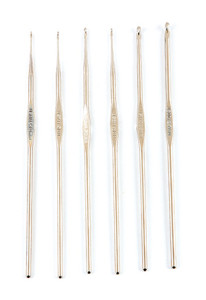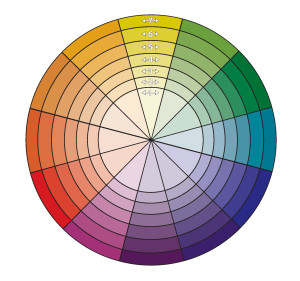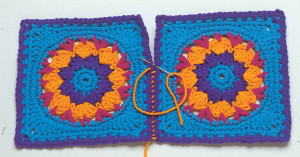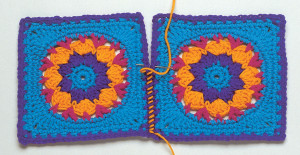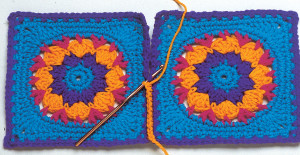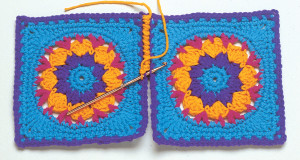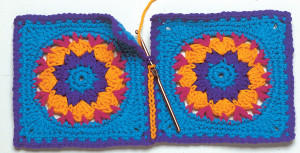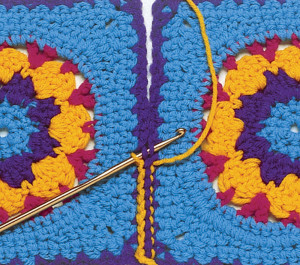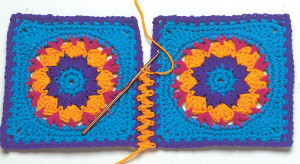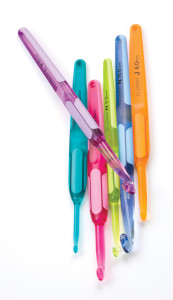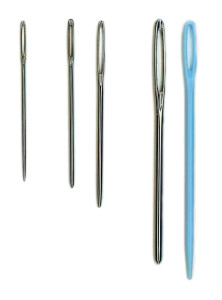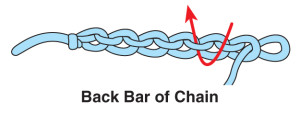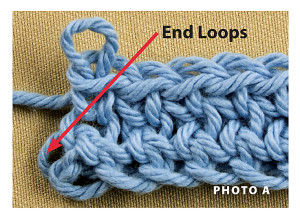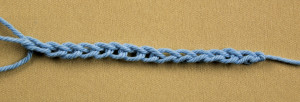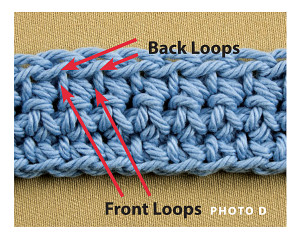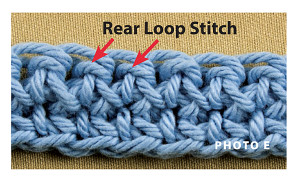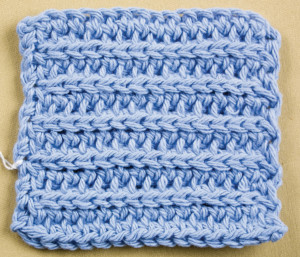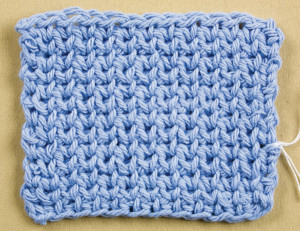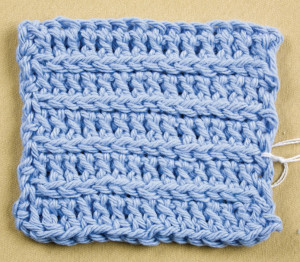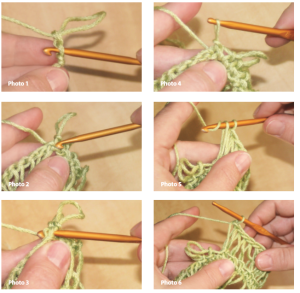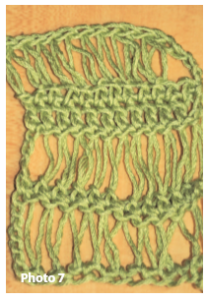If there is anything that is truly magical not only in crochet but in life itself, it’s color! In everyday life, people often give very little thought to color, yet responses to color are very real and can be scientifically measured. Although often the last thing on one’s mind, color influences many day-to-day choices, and that makes it something important to consider when you’re choosing color for your crochet patterns.
Color Psychology for Crochet and Real Life
Let’s take a step back from the world of crochet and talk about how color is used in real life. Manufacturers and merchants spend billions of dollars to capitalize on our responses to color because they know colors influence what we buy, how much we eat, as well how as how we are likely to feel and respond to their products in other ways. For example, red is often used in the decor of a fast-food restaurant because red stimulates and increases your appetite, so you’ll spend more money on food when surrounded by red, and you’ll be subconsciously dissuaded from lingering over the meal. Both red and yellow catch the eye and are used on food labels to stand out enticingly on store shelves, making them more visually appealing to the shopper.
When it comes to choosing yarn colors, it’s easy to become confused at the vast array of offerings in any store. Take the guesswork out of yarn choices for your next project with a small investment in a color wheel, a purchase that will almost guarantee you’ll never make another color error again! Craft stores offer color wheels that are small and flat enough to slide into most handbags.
Color Basics for Crochet
Instructions included with the color wheel shown here are simple and easy to grasp. To begin, choose a color of yarn, such as red, and then match the shade and the color number on the color wheel as closely as possible. As you rotate the inner wheel, notice how the symmetrical spacing and cutout shapes automatically indicate harmonious combinations. For example, if the color value of your red is No. 4, the arrows on the inner wheel point to opposite and complementary shades to use with your red, all of which also have a value of No. 4.
The more your project combines colors with one another, the more sophisticated and fashion oriented they become. In addition, the value of a color is deepened when mixed with black and becomes lighter when mixed with white. The next step/nuance would be to add gray to create more hues.
Color Properties: Value & Visual Weight and How to Use Them in Crochet
In looking at the color values shown in Fig. 2, the primary colors of blue, yellow and red in Tier 1 cannot be mixed from other colors. The secondary colors in Tier 2 result from mixing two primary colors together: blue + red = purple; yellow + blue = green; red + yellow = orange. The tertiary colors in Tier 3 result from mixing one primary color with one adjacent secondary color: yellow/green, blue/green, blue/purple, red/purple, red/orange and yellow/orange.
When selecting yarn colors, two properties must be taken into consideration: the value of the colors and the visual weight. The lighter the color, the less it appears to weigh visually, while the darker the color, the heavier it seems. The most eye-catching color combinations are those that are the most opposite in value and weight, such as black and white, as well as other primary or strong colors combined with white. These opposites really stand out in your crochet projects.
The most soothing combinations are monochromatics, but they can also be made to pop when one hue is very strong. For example, if you make a sweater in shades of tan, and then work the edging, collar or ribbing in a dark brown, the dark brown stands out and makes a strong, appealing statement. The goal is to achieve visual balance while using harmonious shades. Without a color wheel, this can be a daunting, risky task.
The Best Colors to Wear: Choose Yarn Color Wisely for Your Crochet Clothing
When it comes to colors, those we use in home decorating are not necessarily the most flattering when it comes to clothing. The colors a person wears should complement one’s eyes, hair and skin coloring to be truly flattering. Colors fall into two basic groupings: warm and cool. Warm colors have golden undertones, while cool colors are based on blue. If your skin undertone is slightly blue (cool), then warm hues such as corals, oranges and rusts probably shouldn’t be in your personal color palette for crochet clothing because they are visually discordant with your skin tone.
If your undertone is warmer, cool blues and lavenders will tend to make you look wan and washed out.
Generally speaking, yellow is the single most difficult color to wear. If yellow is a color you truly love, choosing the right shade for your clothing will make all the difference. If your skin coloring is warm, select a banana shade that has a bit more red than lemon yellow, which is a slightly harsher yellow with green undertones. If your skin tone is cool, then opt for yellows with hints of greens or blues.
If you haven’t yet discovered the secret of the two easiest-to-wear colors (regardless of your own skin, hair and eye colors), just give turquoise and coral a try in your crochet clothing projects! Before long, someone is sure to say, “Wow! That is so your color!” These clear colors have perfectly balanced values and are flattering for everyone. When you look at or wear either of these two colors, your psychological response is an automatic lifting of spirit — making you feel good while you’re looking good.
For more information about the psychology of color, look up one of the many books available on the subject. The enlightening information found therein will take your ability to choose the right colors for your crochet clothing to an entirely new level.
Monochromatic color schemes always work when it comes to clothing or home decorating, as long as you begin with a basic yarn color for your crochet project that flatters your own coloring. By varying the hues of the basic color, you add visual interest and impact. The more varied textures are introduced along with varied shades, the more sophisticated, interesting and pleasing you’ll find your final crochet project. For example, if you love green, try mixing and matching any shades from the lightest to darkest in varied amounts for the most impact, using one shade as an accent to optimize your end result.
The most sophisticated and difficult monochromatic color palette for crochet projects (and any project, for that matter) is undoubtedly that of neutrals: creams, grays and tans. Color wheels are unable to break down the intricate values of neutrals. It takes an expert eye and knowledge to maintain the shading and visual balance of these subtle color changes and hues.
If you truly love neutrals and want to incorporate them into your crochet projects, go to your local home-improvement store and gather up paint chips to take home and study. Most paint manufacturers make it easy for you as they show color palettes in families with predetermined and matching values. For starters, look at the pale creams and you’ll immediately notice distinct differences. Some chips have strong undertones of green or blue, while others are more yellow or orange; yet others have hints of brown or black. This is understandable because white is actually a combination of all colors, not an absence of color, and cream is just a subtle darkening of white.
Color Trends: Going Beyond Crochet
When it comes to color, trends are not based on strong and growing demand for certain colors; rather, they are based on the findings from focused worldwide networks. Participants of these groups come from varied walks of life. Each member follows and studies such things as sports, politics, economics, music, arts, cuisine, leisure activities, decorating, fashion, the environment and cultural diversity, just to name a few. Each aspect of study provides useful information that allows the collective group to forecast colors with validity. When the core group comes to consensus, color chips are then developed and distributed to designers and manufacturers who further develop their own forecast for trends for yarn, fabric, paint, clothing, furniture and the like.
From season to season the hues of core colors change slightly to reflect worldwide changes as they occur within focus groups. Colors then become stronger, more muted or more convoluted to reflect global changes.
How drab the world would be without the magic of color. It is truly something to celebrate and enjoy! Thank goodness that the secrets of color can be revealed to enhance our crochet projects with a simple little color wheel.





